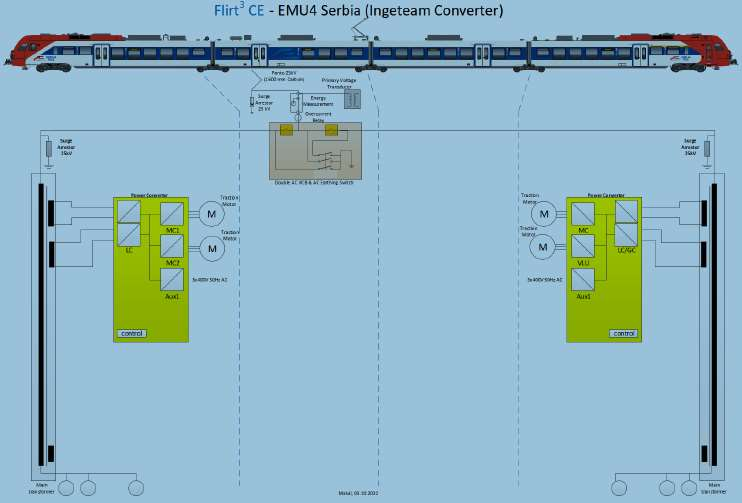Evaluating automobile’s vibration in frequency domain
Abstract
Excitation of the low frequency not only influences the driver’s health but also strongly affects the durability of the automobile’s structures. To research the automobile’s vibration in the low-frequency region, a dynamic model of the automobile is established to calculate the vibration equations of the automobile in the time region. Based on the theory of the Laplace transfer function, the automobile’s vibration equations in the time region are transformed and converted to the automobile’s vibration equations in the frequency region. Then, the effect of the automobile’s design parameters and operation parameters on the characteristic of the automobile’s acceleration-frequency is simulated and analyzed to evaluate the automobile’s comfort as well as the durability of the automobile’s structures in the frequency region. The research results show that the design parameters of stiffness, mass, and road wavelength remarkably affect the characteristic of the automobile’s acceleration frequency. To reduce the resonant amplitude of the acceleration frequency in the vertical and pitching directions of the automobile, the stiffness parameters of the automobiles and tires should be reduced while the mass of the automobile’s body should be increased. Additionally, the road’s roughness also needs to be decreased, or the road’s quality needs to be enhanced to reduce the resonant amplitude of the automobile’s acceleration frequency.
References
[1]Yang Y, Ren W, Chen L, et al. Study on ride comfort of tractor with tandem suspension based on multi-body system dynamics. Applied Mathematical Modelling. 2009; 33(1): 11-33. doi: 10.1016/j.apm.2007.10.011
[2]Nariman-Zadeh N, Salehpour M, Jamali A, et al. Pareto optimization of a five-degree of freedom vehicle vibration model using a multi-objective uniform-diversity genetic algorithm (MUGA). Engineering Applications of Artificial Intelligence. 2010; 23(4): 543-551. doi: 10.1016/j.engappai.2009.08.008
[3]Pekgökgöz R, Gurel M, Bilgehan M, et al. Active suspension of cars using fuzzy logic controller optimized by genetic algorithm. International of Journal Engineering Application Sciences. 2010; 2(4): 27-37.
[4]Ghoniem M, Awad T, Mokhiamar O. Control of a new low-cost semi-active vehicle suspension system using artificial neural networks. Alexandria Engineering Journal. 2020; 59(5): 4013-4025. doi: 10.1016/j.aej.2020.07.007
[5]Zhu Y, Bian X, Su L, et al. Ride Comfort Improvement with Preview Control Semi-active Suspension System Based on Supervised Deep Learning. SAE International Journal of Vehicle Dynamics, Stability, and NVH. 2021; 5(1). doi: 10.4271/10-05-01-0003
[6]Wang H, Kin Wong P, Zhao J, et al. Observer-based robust gain-scheduled control for semi-active air suspension systems subject to uncertainties and external disturbance. Mechanical Systems and Signal Processing. 2022; 173: 109045. doi: 10.1016/j.ymssp.2022.109045
[7]Félix-Herrán LC, Mehdi D, Rodríguez-Ortiz J de J, et al. H∞control of a suspension with a magnetorheological damper. International Journal of Control. 2012; 85(8): 1026-1038. doi: 10.1080/00207179.2012.674216
[8]Maciejewski I. Control system design of active seat suspensions. Journal of Sound and Vibration. 2012; 331(6): 1291-1309. doi: 10.1016/j.jsv.2011.11.010
[9]Wang L, Li J, Yang Y, et al. Active control of low-frequency vibrations in ultra-precision machining with blended infinite and zero stiffness. International Journal of Machine Tools and Manufacture. 2019; 139: 64-74. doi: 10.1016/j.ijmachtools.2018.11.004
[10]Zhu T, Wan H, Wang Z, et al. Model reference adaptive control of semi-active suspension model based on adaboost algorithm for rollover prediction. SAE International Journal of Vehicle Dynamics, Stability, and NVH. 2022; 6(1): 71-86. doi:10.4271/10-06-01-0005
[11]ISO 2631-1:1997. Mechanical Vibration and Shock-Evaluation of Human Exposure to Whole Body Vibration-Part 2. International Organization for Standardization; 1997.
[12]ISO 8068. Mechanical Vibration Road Surface Profiles Reporting of Measured Data. International Organization for Standardization; 1995.
[13]Sun L. Optimum design of road-friendly vehicle suspension system subjected to rough pavement surfaces. Applied Mathematical Modelling. 2002; 25(5): 635-652. doi:10.1016/S0307-904X(01)00079-8
[14]Sun X, Zhang J. Performance of earth-moving machinery cab with hydraulic mounts in low frequency. Journal of Vibration and Control. 2014; 20(5): 724-735. doi:10.1177/10775463124642
[15]Ye S, Hou L, Zhang P, et al. Transfer path analysis and its application in low-frequency vibration reduction of steering wheel of a passenger vehicle. Applied Acoustics. 2020; 157: 107021. doi: 10.1016/j.apacoust.2019.107021
[16]de Brett M, Butlin T, Nielsen OM. Analysis of nonlinear vibration transmission through a vehicle suspension damper at low audio frequencies. Journal of Sound and Vibration. 2023; 551: 117615. doi: 10.1016/j.jsv.2023.117615
[17]Lakhdar Z, Chorfi SM, Belalia SA, et al. Free vibration and bending analysis of porous bi-directional FGM sandwich shell using a TSDT p-version finite element method. Acta Mechanica. 2024; 235: 3657-3686. doi: 10.1007/s00707-024-03909-y
[18]Belabed Z, Abdelouahed T, Mohammed A, et al. On the elastic stability and free vibration responses of functionally graded porous beams resting on Winkler-Pasternak foundations via finite element computation. Geomechanics and Engineering. 2024; 36(2): 183-204. doi:10.12989/gae.2024.36.2.183
[19]Bentrar H, Mohammed S, Belalia S, et al. Effect of porosity distribution on free vibration of functionally graded sandwich plate using the P-version of the finite element method. Structural Engineering and Mechanics. 2023; 88(6): 551-567. doi:10.12989/sem.2023.88.6.551
[20]Mesbah A, Belabed Z, Amara K, et al. Formulation and evaluation a finite element model for free vibration and buckling behaviours of functionally graded porous (FGP) beams. Structural Engineering and Mechanics. 2023; 86(3): 291-309. doi: 10.12989/sem.2023.86.3.291
[21]Dang V. Influence of Structural Parameters and Operating on Vietnam’s Bus Ride Comfort. Hanoi University of Science and Technology, Vietnam; 1996.
[22]Nguyen SD, Nguyen QH, Choi SB. A hybrid clustering based fuzzy structure for vibration control – Part 2: An application to semi-active vehicle seat-suspension system. Mechanical Systems and Signal Processing. 2015; 56-57: 288-301. doi: 10.1016/j.ymssp.2014.10.019
[23]Zhu G, Du X, Liu W, et al. A novel method to solve the existed paradox of low-frequency vibration isolation and displacement attenuation in a nonlinear floating-slab on the wheel-rail loads. Mechanical Systems and Signal Processing. 2024; 208: 110985. doi: 10.1016/j.ymssp.2023.110985
[24]Yang J, Nguyen V, Wang X, et al. Performance study of semi-active seat suspension added by quasi-zero stiffness structure under various vibratory roller models. Proc. IMechE, Part D: Journal of Automobile Engineering. 2023; 237(6): 1-15. doi:10.1177/ 0954407022114316
Copyright (c) 2024 Yujie Jia, Vanliem Nguyen

This work is licensed under a Creative Commons Attribution 4.0 International License.





.png)


